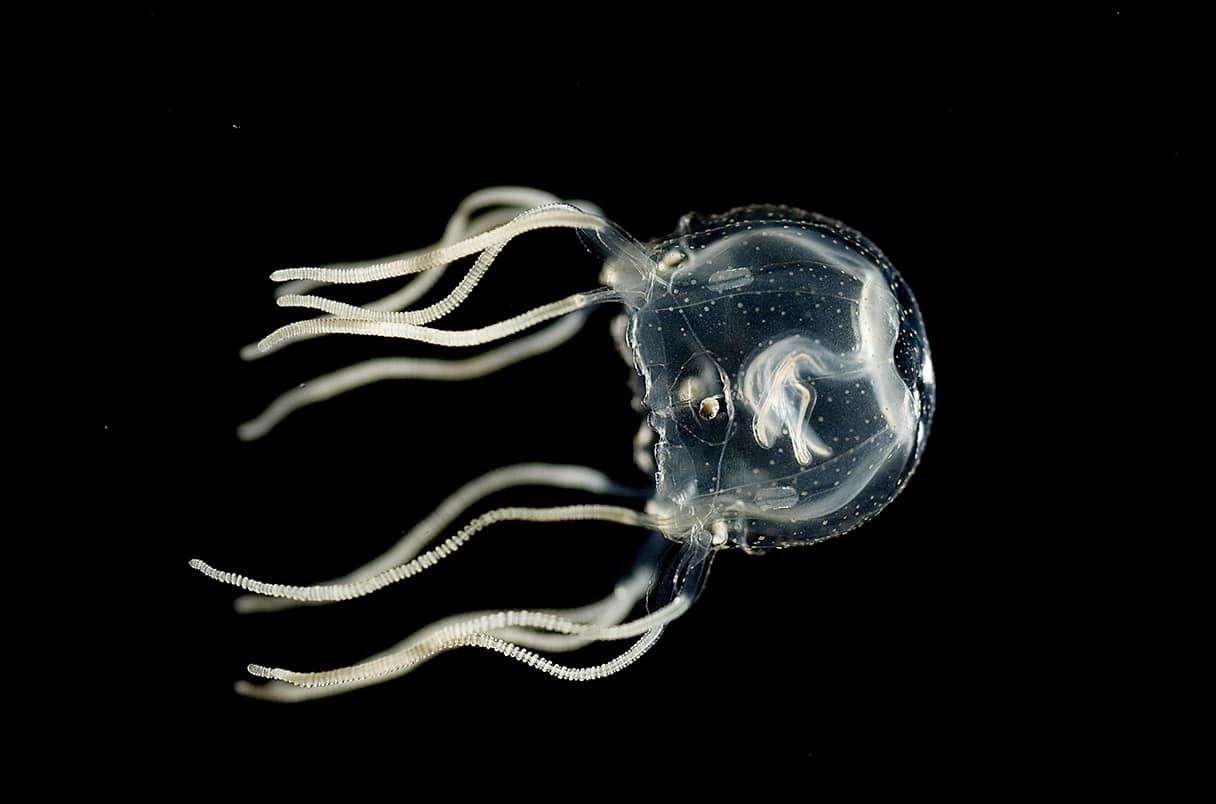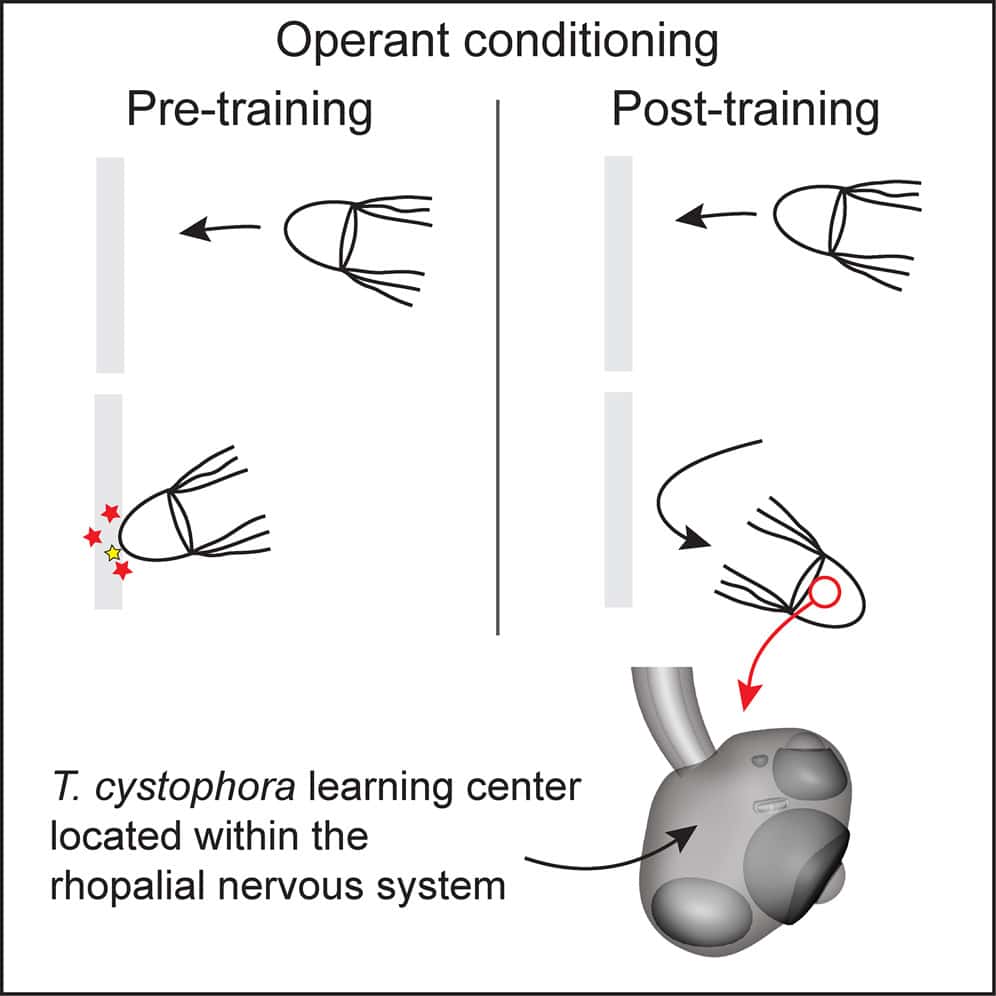Jellyfish are much more advanced than we thought. A new study has shown that the Caribbean box jellyfish (Tripedalia cystophora) can learn at a much more complex level, using knowledge from past experiences just like humans, mice and flies. The findings, the researchers said, could change what we know about how cognition works.

While they’ve been around for over 500 million years, jellyfish are usually described as simple creatures with limited learning skills. They and their relatives, collectively known as cnidarians, are considered to be the earliest extant animals to develop nervous systems. Jellyfish have no brains, though.
Neurobiologist Anders Garm has been researching box jellyfish for over a decade, a group of jellyfish known for being among the world’s most venomous creatures. But these jellies are also interesting for another reason. It turns out they aren’t as daft as once believed, changing our understanding of what simple nervous systems can do.
“It was once presumed that jellyfish can only manage the simplest forms of learning, including habituation (the ability to get used to a certain stimulation). Now, we see that jellyfish have a much more refined ability to learn, and that they can actually learn from their mistakes,” Garm, one of the study’s authors, said in a news release.
Responding to experience
One feature of more advanced cognitive abilities is changing one’s behavior as a result of experience. In other words, to remember and learn. Garm and his team wanted to test this in box jellyfish. They focused on the Caribbean box jellyfish, a fingernail-sized medusa that lives in mangrove swamps in the Caribbean.
First, the researchers decorated a round tank with grey and white stripes to simulate the jellyfish’s natural habitat, with grey stripes mimicking mangrove roots. At first, jellyfish swam close to the stripes and bumped into them. However, by the end of the experiment (7.5 minutes later), the jellyfish increased their average distance from the wall by about 50%.

Jellyfish quadrupled the number of successful pivots to avoid collision and reduced their contact with the wall by half, suggesting they can learn from experience through visual stimuli.
“We can see that as each new day of hunting begins, box jellyfish learn from the current contrasts by combining visual impressions and sensations,” Garm said.
The researchers then wanted to identify the underlying process of the jellyfish’s associative learning by isolating the animal’s visual sensory centers, known as rhopalia. These sensory structures carry six eyes and trigger pacemaker signals that coordinate the jelly’s pulsing motion, which increases in frequency when the animal veers away from obstacles.
They isolated individual rhopalia and placed them in front of moving grey bars to mimic approaching objects. At first, the structure didn’t respond to light grey bars, interpreting them as distant. However when stimulated with a combination of visual cues and weak electric signals, these structures generated responses that helped the jellyfish avoid obstacles, proving that even with a very basic nervous system, these animals can learn through a form of ‘associative learning.’
“Despite having a mere one thousand nerve cells, they can connect temporal convergences of various impressions and learn a connection — or what we call associative learning,” Garm said.
The next steps
The study challenges previous scientific perceptions of what animals with simple nervous systems can do. For overall neuroscience, it’s really big news, Garm said. “This suggests that advanced learning may have been one of the most important evolutionary benefits of the nervous system from the very beginning,” he added.
Future research will delve into how exactly these jellyfish store memories and further explore their sensory systems.
“It’s surprising how fast these animals learn; it’s about the same pace as advanced animals are doing,” Garm said in a statement.
The study was published in the journal Current Biology.






